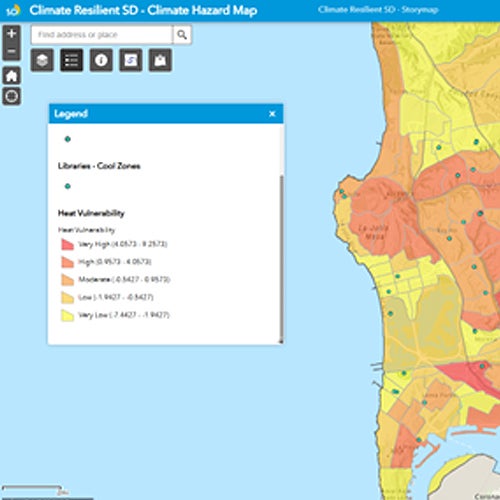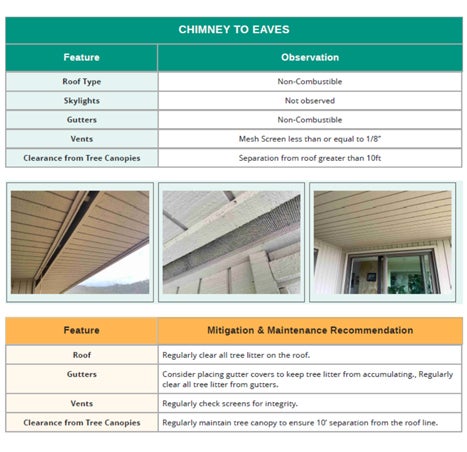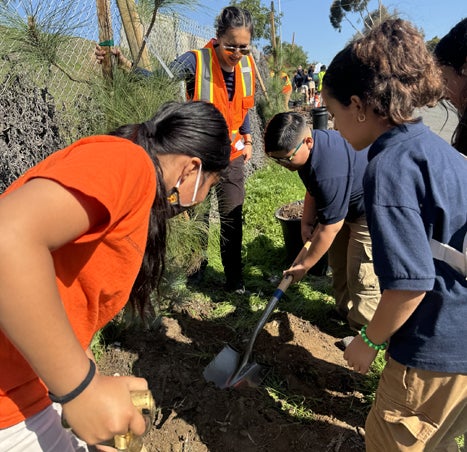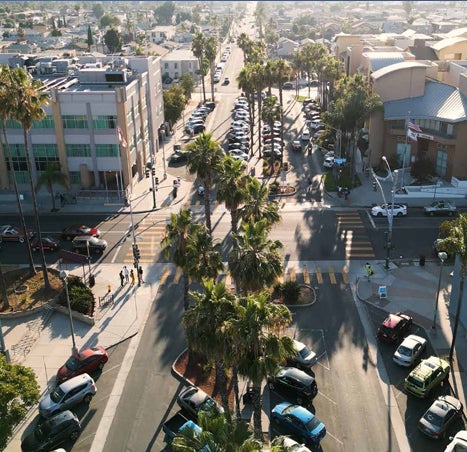Critical City Services
Critical City Services Policies
Expand a policy to view related resilience and adaptation strategies and their implementation statuses.
Implementation Highlights

In FY25, City Planning and the Department of IT finalized an internal climate change hazard web map. The web map integrates the latest climate data for flooding, sea level rise, wildfire and heat into one platform for ease of use and access by City departments. The web map allows City departments to add in Geographic Information System (GIS) layers of their assets and is intended to support decision making related to infrastructure planning and investments that considers climate change hazards. City Planning is currently working on a public version that will provide the latest climate change hazard data layers in one central location, provide information to explain each layer and link to resources related to hazard preparedness.

The Department of General Services Energy Division will soon implement Hazard Mitigation Grant Program funds focused on Community Resilience Centers. The funding will help the City identify resilience features desired by both internal stakeholders and community members, as well as locations where Community Resilience Centers would be most beneficial. One City facility will be selected for Community Resilience Center design and a follow-on funding application. The Energy Division expects to select a consultant to help facilitate the work in FY26.

Launched on July 1, 2025, the San Diego Fire Department now offers a Home Risk Assessment. This assessment includes an educational Defensible Space Inspection that provides homeowners with valuable insight about the defensible space and the 0-5 ft. ember resistance zone. The goal of this personalized service is to educate homeowners about the purpose of defensible space while making homes more insurable, protected and ember-resistant against wildfires.
Requests for this assessment are now being accepted.

The City of San Diego has an Urban Tree Canopy Fee that supports maintenance and expansion of the City's urban tree canopy efforts, helping to meet both Climate Action Plan and Climate Resilient SD goals. The Urban Tree Canopy Fee applies to development projects that are unable to meet the City's tree planting requirements. Funds collected are used for planting and maintaining of trees in public spaces throughout the city. The Urban Tree Canopy Fund collected $19,036 in funds in FY25.

In FY25, City Planning continued to update the Clairemont, College Area and Mid-Cities Community Plans. Climate hazard projections and climate adaptation and resilience policies are incorporated into these plan updates. For example, the Mid-Cities Existing Conditions Report includes a section on Sustainability, Equity and Climate that considers exposure to extreme heat, flooding, and wildfire events. This report, alongside extensive community engagement, will help shape the concepts and policies included in the Draft Community Plan. Consideration for climate change hazards and resilience opportunities were also incorporated into other long-range planning efforts, including the Chollas Creek Watershed Master Plan and Pure Water program.

In FY25 the Public Utilities Department continued working on the Integrated Master Plan. The Integrated Master Plan looks across various asset groups, including drinking water, source water, wastewater, reclaimed water, and the City's Pure Water Program to ensure long term sustainability, reliability, and resiliency of the assets. Within this planning effort, the Public Utilities Department will analyze the effects of climate change hazards on its assets and operations. The Integrated Master Plan Climate Change Analysis will inform the prioritization of the department's infrastructure projects.


